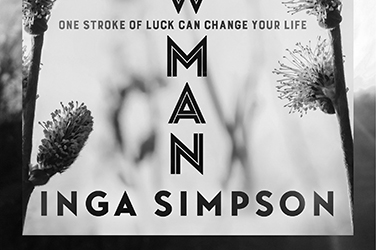
- Free Article: No
- Contents Category: Fiction
- Review Article: Yes
- Article Title: The perfect bat
- Article Subtitle: That rarity, a cricket novel
- Online Only: No
- Custom Highlight Text:
In American culture, the baseball novel is virtually a genre unto itself, baseball offering a metaphor through which the American dream – the rise and fall and rise again of unlikely heroes – might be interrogated. The prologue of Don DeLillo’s Underworld (1997) offers a stunning example: within all the noise and spectacle of a baseball final an entire nation, as it teeters on the edge of the atomic age, is apprehended.
- Featured Image (400px * 250px):

- Alt Tag (Featured Image): Diane Stubbings reviews 'Willowman' by Inga Simpson
- Book 1 Title: Willowman
- Book 1 Biblio: Hachette, $32.99 pb, 403 pp
Allan Reader crafts cricket bats, shaping their distinctive form from the white willow he grows on his own small plantation on the outskirts of Melbourne. He longs to make bats that are unique; to shave away the layers of wood and find the magic, the ‘transcendence’, within: ‘it’s one-part mystery. But get the right combination, the perfect bat for a great player, and something mythic can happen.’
Reader searches for that ‘once-in-a-generation’ player who might be able to bring a bat he has made to life. He finds the man he is looking for in up-and-coming Queensland batter Todd Harrow. He studies Harrow’s game, sculpts a bat that will amplify Harrow’s natural talents and sends it to him, hoping the young gun will use it: ‘I’m invested in Harrow now, my happiness tied to his career, his success. It’s almost as terrifying as falling in love.’
Harrow’s backstory is full of Bradmanesque echoes. His father, a dairy farmer and cricket tragic, has laid down a wicket in his fields so that Harrow and his sister can hone their skills. While still a schoolboy, Harrow advances through the ranks, scoring century after century, eventually being drafted into the Australian squad. Harrow comes to believe that his meteoric rise has been expedited by Reader’s bat: ‘the bat had gifted him additional powers, taking his game to the next level’.
Much of Willowman reads like a boy’s own adventure. If there is a match to be won in incredible circumstances or a courageous innings to be played, it’s almost guaranteed that Harrow will be involved. To this end, Simpson borrows key moments from cricket history – not least Rick McCosker’s 1977 Centenary Ashes innings, played with a broken jaw – to bolster Harrow’s legend.
The effect is a portrayal of Australian cricket that is not only romanticised but also heavily sanitised. Significant moments of sportsmanship from the game’s recent annals, no matter within which national team they originated, are here ascribed to the fictional Australian team. And there is something almost quaint in Australian cricketers being depicted as the innocent victims of sledging, rather than its most notorious perpetrators.
There is, Simpson writes, a ‘synchrony between the craftsmen and the game itself, [a] mutual evolution’, and the first half of the novel celebrates this synchrony, the relationship between Harrow and his bat seeming to anticipate the transcendence for which Reader has been reaching. Yet the novel’s trajectory, its intention even, shifts in its second half, the focus turning towards the relationship between Reader and his adult daughter Katie, and the rekindling of Reader’s love for music (he once hoped to be a professional oboist). Despite the agreeable warmth in the scenes between Reader and his daughter, and the flurries of excitement deriving from Harrow’s pluckier feats, the novel, like Harrow’s career, simply peters out.
Too often Willowman’s narrative is confined to the commentary box – all the thrills and frustrations of the game come second-hand. Passages of play are rendered in excessive detail (even for a cricket lover) and there is a tendency for exposition to supplant storytelling, the history and culture of the game occasionally reading like half-digested passages from Wisden: ‘But then World Series Cricket came along, with its corporate sponsorship, coloured clothes and colourful characters, and changed the game for ever. A lot of it was for the better, too. Players weren’t even paid properly before that.’
The best sporting novels tend to look for a pulse within both the sport and its reception that might betray something of a national psyche, and Simpson’s decision to make cricket the subject of Willowman rather than its metaphor fundamentally limits the novel. Had Simpson’s narrative paid more than fleeting attention to the gay male cricketer she introduces (there are still no openly gay cricketers in international men’s teams), the racially abused First Nations cricketer, or even Harrow’s gifted sister, whose cricketing prowess begins to overshadow her brother’s, Willowman might have emerged as something more than a genial, if ultimately unsatisfying, summer novel.


Comments powered by CComment